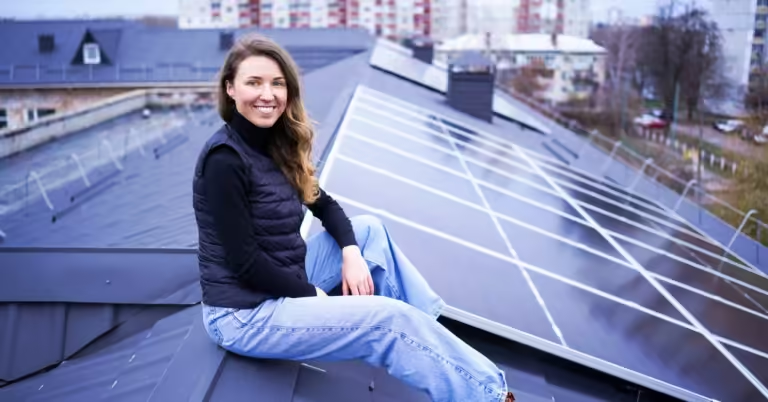What is the difference when implementing distributed solar power generation in schools compared to hospitals?
Although the capacity you install may differ, the process is the same in that you identify what you need according to your own criteria. For example, rebuilding a school requires air raid shelters, must provide education for at least 500 students, must be able to learn offline, and must be technically constructible.
For schools, a typical solar power plant will have a capacity of about 20 to 30 kilowatts, and a storage unit will produce about 40 kilowatts per hour. This means that it covers approximately 35 percent of the school’s annual consumption. Depending on consumption, it can cover between 30 percent and 50 percent of annual consumption, and theoretically, our energy storage covers approximately 6 hours of power outage. However, in reality, we found that the school was able to use the storage for 8 hours due to its prudent actions.
We do the same thing in hospitals. We’re just building a building with solar-powered operating rooms and intensive care units. This is the rule. No energy storage facilities will be installed in the pediatric building. Because doctors there do not save lives, but only provide basic services to children. The number of people accommodated varies depending on the building. For hospitals, that capacity is typically 60 to 70 kilowatts, which doubles the amount of solar power and storage. The total budget per school is approximately 50,000 euros. The budget for one hospital is approximately 100,000 euros.
We can build a lot of things, but humans are the ones who need to act so that we can use them in the most efficient way. It is also their job to take care of it and maintain it.
What impact does your work have?
Unfortunately, our main job is to always cover power outages. But there are other direct financial implications as well. The solar energy system we have installed in our school saves us between 1,500 and 2,000 euros per year. For hospitals, it costs around 2,500 to 3,000 euros per year.
But the indirect effects are even more important. When we come to a small community like this, people are shocked and very curious. People learn and ask how we can do what we are doing, can we teach it, how should we talk to the government, can we do more?
We have developed education courses on sustainability and green energy to educate children about the importance of sustainable energy in all our schools. We strive to raise awareness of green energy and provide a holistic view of sustainable lifestyles and how everything is connected.
Hear Yuliana Onischuk speak at the WIRED & Octopus Energy Tech Summit on October 10th at Kraftwerk in Berlin. Find out everything you need to know about the event here and get your tickets at energy-tech-summit.wired.com.
(Tag translation) Science

